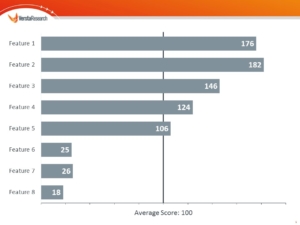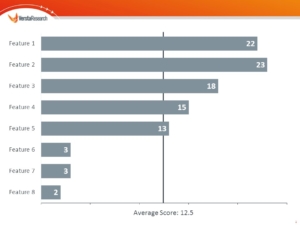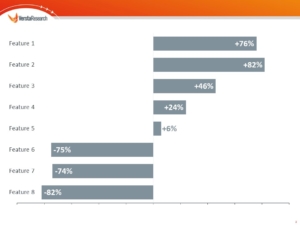A Better Way to Scale MaxDiff Utilities
MaxDiff is a survey method used to measure the importance of product features. Subsets of features are presented, and respondents are asked to select which feature is most important and which feature is least important. Its advantage over other techniques is that by forcing a choice from among multiple features, it more strongly differentiates the features if customers are prone to say that all features are important or attractive.
One way to analyze the data is to use a simple counting technique. It works pretty well, by the way. But the more common way these days is to use advanced statistical modeling that allows for stronger individual-level estimates of importance scores. This affords better opportunities for segmenting the data and analyzing subgroups.
We typically see analysts transforming the importance scores (or utilities) to a 0—100 scale. It is a compelling scale because all importance scores add up to 100, which mimics the technique of having respondents allocate 100 importance points to each of the features they care about.
But if you do a lot of MaxDiff studies and frequently present them to your management team, you lose the ability to provide a rule of thumb as to what counts as a “high” score vs. a “low” score. If one MaxDiff exercise uses fifteen attributes, an importance score of 20 is quite high; if another MaxDiff exercise uses just five attributes, and importance score of 20 is just average.
The solution? Instead, we typically transform scores to a 0—100*N scale, where N=the number of attributes tested. If you tested fifteen attributes, transform to a 0—1500 scale. If you tested five attributes, transform to a 0—500 scale. With this method, a score of 100 is always the average, scores above 100 are always above average, and scores below 100 are always below average. Sometimes we transform this into a chart showing “percent above/below average” as shown in the third example below, but this is not always necessary because anchoring the average at 100 makes it simple to calculate those percentages mentally.
Need help with the smartest ways to design, implement, and report MaxDiff studies? Call us at (312) 348-6089 for assistance and further information.
—Joe Hopper, Ph.D.










